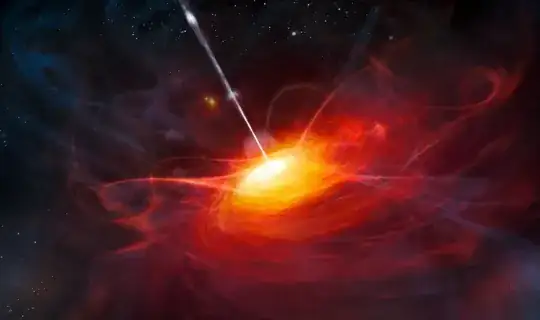We've heard it many times, nothing can escape the gravity of a black hole, even light once it's past the event horizon. If this is true, how can a black hole emit anything? Quasars are massive black holes that have consumed enormous amounts of matter and energy, and then blasted it back out into the universe. How is this possible? Time stands still in a black hole, that in itself should stop anything from moving.
2 Answers
The emissions we observe from quasars and blazars are not coming from the black hole, but from the accretion disk that surrounds it. The linked Wikipedia article to quasars even says (emphasis mine),
Quasars are believed to be powered by accretion of material into supermassive black holes in the nuclei of distant galaxies, making these luminous versions of the general class of objects known as active galaxies. Since light cannot escape the black holes, the escaping energy is actually generated outside the event horizon by gravitational stresses and immense friction on the incoming material.
The artists rendering (from the Wiki link above) shows the gas surrounding the black hole (which would be in the center of the white region) is falling into the black hole. This gas is the accretion disk. The gas typically follows the magnetic field in the region, which is thought to be the cause of the jet-like structure (the white-ish bit streaming outwards) that we observe.

- 29,127
To the extent that the black hole is not spherical (a disk), there is a line perpendicular to the disk, and passing through its center, that will experience the cancellation of the forces perpendicular to it (radial direction). So, as matter is converted into energy, some of it will be able to "escape" along said line.
- 2,573